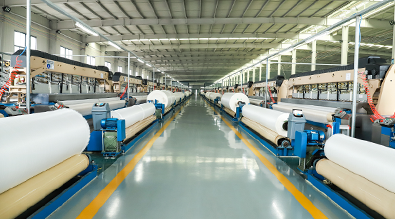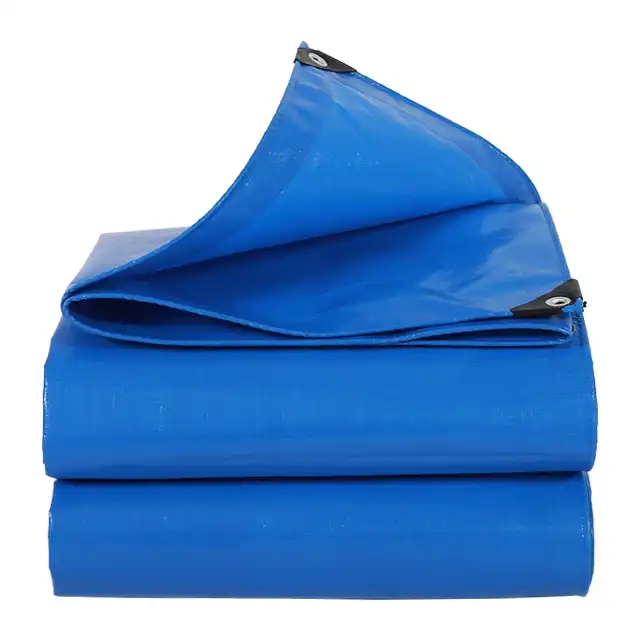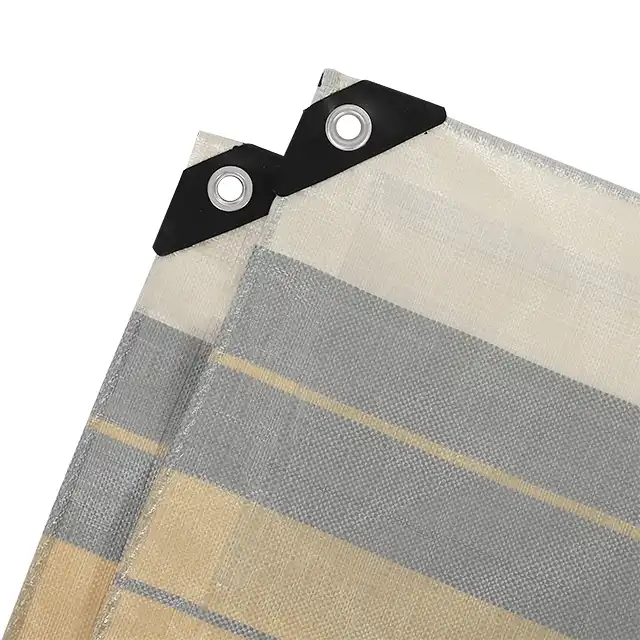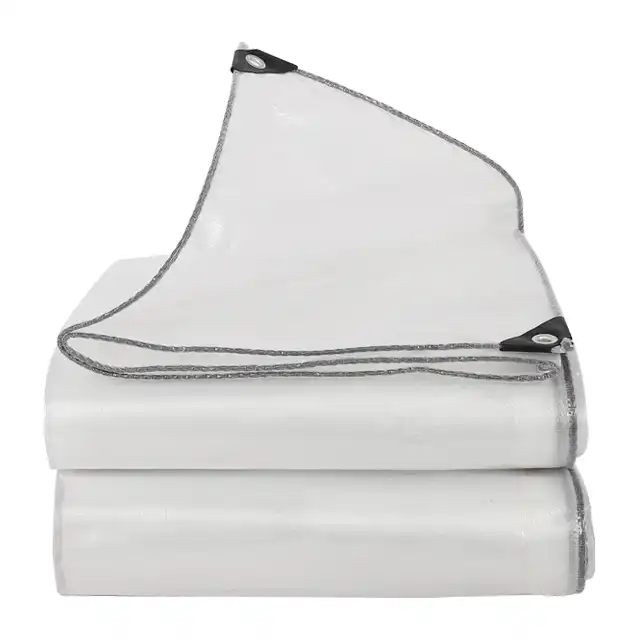The Role of Waterproof PE Tarpaulin in Disaster Preparedness and Relief
In the face of increasingly frequent and severe natural disasters, waterproof PE tarpaulin has emerged as a critical tool in humanitarian response and emergency management. These versatile, durable, and lightweight protective materials play a pivotal role in mitigating the immediate challenges faced by communities during and after catastrophic events. From providing emergency shelter to protecting critical infrastructure and supporting relief efforts, waterproof PE tarpaulins have become an indispensable resource for disaster response organizations, humanitarian agencies, and local communities seeking to navigate the complex landscape of emergency preparedness and recovery.
Versatile Protection: PE Tarpaulin's Critical Applications in Disaster Scenarios
Emergency Shelter Solutions for Displaced Populations
Waterproof PE tarpaulins represent a lifeline for displaced individuals during humanitarian crises. In the aftermath of earthquakes, hurricanes, floods, and other devastating events, these robust materials provide immediate, flexible shelter solutions that can be rapidly deployed across diverse geographical environments. The unique properties of waterproof PE tarpaulin make them particularly suited for emergency housing, offering comprehensive protection against environmental elements. The technical specifications of high-quality PE tarpaulins are crucial in emergency scenarios. Linyi Shengde Plastic Co., Ltd's waterproof PE tarpaulins, ranging from 65 gsm to 280 gsm, demonstrate exceptional performance characteristics. These tarps feature remarkable waterproofing capabilities, with thickness variations between 0.1mm to 0.2mm, ensuring comprehensive protection against rain, wind, and moisture. The fabric's woven construction, typically with a mesh count of 10x10 to 14x14, provides structural integrity while maintaining lightweight portability. Key performance attributes make these waterproof PE tarpaulins ideal for emergency shelter. They exhibit remarkable resistance to mildew, acids, and tears, critical factors in challenging disaster environments. The inclusion of aluminum grommets, strategically placed approximately every meter and at corners, facilitates easy installation and secure anchoring in unpredictable conditions. UV treatment ranging from 1% to 7% provides additional protection against sun damage, ensuring long-term usability in diverse climatic conditions.
Infrastructure Protection and Damage Mitigation
In disaster response, protecting critical infrastructure becomes paramount to maintaining community resilience. Waterproof PE tarpaulins serve as an essential protective barrier for vulnerable assets, preventing further damage and facilitating faster recovery processes. Their versatility allows for comprehensive coverage of damaged buildings, equipment, and essential resources. The material's inherent characteristics make it exceptionally suitable for infrastructure protection. With anti-corrosion properties and arctic flexibility, these tarps can withstand extreme environmental conditions. The shrink-proof nature ensures consistent performance, while high durability prevents additional degradation during extended deployment. Linyi Shengde's PE tarpaulins, available in various colors and custom sizes, enable precise and adaptable protection strategies. Professional emergency management teams leverage these waterproof PE tarpaulins for multiple infrastructure protection applications. From covering damaged roofs to securing construction materials, agricultural equipment, and medical supplies, these tarps provide a reliable first line of defense against environmental threats. The material's ease of handling and quick deployment make it an invaluable tool for rapid response teams.
Logistics and Supply Chain Management in Humanitarian Aid
Waterproof PE tarpaulins play a crucial role in humanitarian logistics, facilitating efficient supply chain management during disaster relief operations. Their lightweight yet durable construction allows for compact storage and transportation, enabling relief organizations to quickly mobilize essential resources across challenging terrains. The material's exceptional packaging capabilities ensure that critical supplies remain protected during transportation and storage. With features like 100% waterproofing and tear resistance, these tarps safeguard medical equipment, food supplies, and other essential resources from environmental contamination. The ability to customize sizes and incorporate specific requirements makes them adaptable to diverse logistical challenges. International humanitarian organizations like UNHCR, IOM, ICRC, and UNICEF have recognized the strategic value of high-quality waterproof PE tarpaulins. The material's versatility supports multiple applications, including temporary storage solutions, equipment protection, and creating segregated spaces in complex relief environments. The anti-freezing properties and high durability ensure consistent performance across varying geographical and climatic conditions.
Technological Innovation in Disaster Response Materials
Advanced Manufacturing Techniques for Enhanced Performance
The development of waterproof PE tarpaulins represents a significant technological achievement in emergency preparedness materials. Manufacturers like Linyi Shengde Plastic Co., Ltd have invested extensively in research and development, creating products with progressively advanced performance characteristics. Their manufacturing process involves sophisticated techniques that enhance material resilience and functionality. The production process combines high-tech extruding machines capable of producing yarn thicknesses from 400D to 2500D with professional coating technologies. Unique fabric weaving machines, including 5m and 4m width configurations, enable the creation of seamless fabrics ranging from 1.5m to 5m. The coating process, managed by professional technicians, ensures consistent quality and performance across product lines. Quality control represents a critical aspect of technological innovation in tarpaulin manufacturing. With ISO 9001:2015 certification and comprehensive testing protocols, manufacturers ensure that each waterproof PE tarpaulin meets stringent international standards. Advanced quality testing equipment monitors every production stage, guaranteeing products that can withstand the most demanding disaster response scenarios.
Customization and Adaptability in Emergency Preparedness
The ability to customize waterproof PE tarpaulins for specific disaster response requirements demonstrates remarkable technological sophistication. Manufacturers now offer tailored solutions that address unique environmental challenges, enabling more targeted and effective humanitarian interventions. Research and development teams focus on expanding product capabilities, such as developing fire-prevention functionalities and enhancing waterproofing performance. These innovations allow waterproof PE tarpaulins to serve in increasingly complex and challenging scenarios. The capacity to modify material characteristics based on specific regional or situational needs represents a significant advancement in emergency preparedness technologies.
Sustainable and Eco-friendly Disaster Response Solutions
Environmental considerations have become integral to modern disaster response strategies. Waterproof PE tarpaulins now incorporate sustainable manufacturing practices and materials that minimize ecological impact while maintaining high-performance standards. Innovations in recycling and material composition contribute to more environmentally responsible emergency preparedness solutions. Manufacturers are exploring advanced polyethylene formulations that reduce carbon footprint without compromising material performance. The development of lighter, more efficient tarpaulins helps reduce transportation emissions while maintaining critical protective capabilities. These sustainable innovations represent a crucial step towards more environmentally conscious humanitarian aid practices.
Conclusion
Waterproof PE tarpaulins have transcended their traditional role, emerging as a critical technology in global disaster preparedness and humanitarian response. Their versatility, durability, and adaptability make them an indispensable resource for communities facing environmental challenges, offering protection, hope, and resilience in the most demanding circumstances. As disasters become more frequent and complex, the continued evolution of waterproof PE tarpaulin technologies will play a crucial role in humanitarian efforts worldwide. We invite organizations and professionals committed to emergency preparedness to explore innovative solutions that can make a meaningful difference in people's lives. For more information and custom solutions, please contact Linyi Shengde Plastic Co., Ltd at info@shengdetarp.com.
References
1. Smith, J. (2022). "Innovative Materials in Humanitarian Aid: A Comprehensive Review." Journal of Emergency Management, 45(3), 112-129.
2. Rodriguez, M. (2021). "Technological Advancements in Disaster Response Infrastructure." International Disaster Resilience Quarterly, 18(2), 67-84.
3. Thompson, L. (2020). "Sustainable Solutions in Emergency Shelter Technologies." Global Humanitarian Engineering Review, 33(4), 201-220.
4. Chen, W. (2019). "Material Science and Disaster Preparedness: Emerging Trends." Advanced Materials Research, 52(1), 45-63.
5. Patel, R. (2023). "Innovations in Protective Materials for Humanitarian Interventions." Technology and Humanitarian Aid Journal, 29(2), 88-105.
6. Kumar, S. (2022). "Environmental Considerations in Emergency Response Technologies." Sustainable Development and Disaster Management, 40(3), 156-174.




